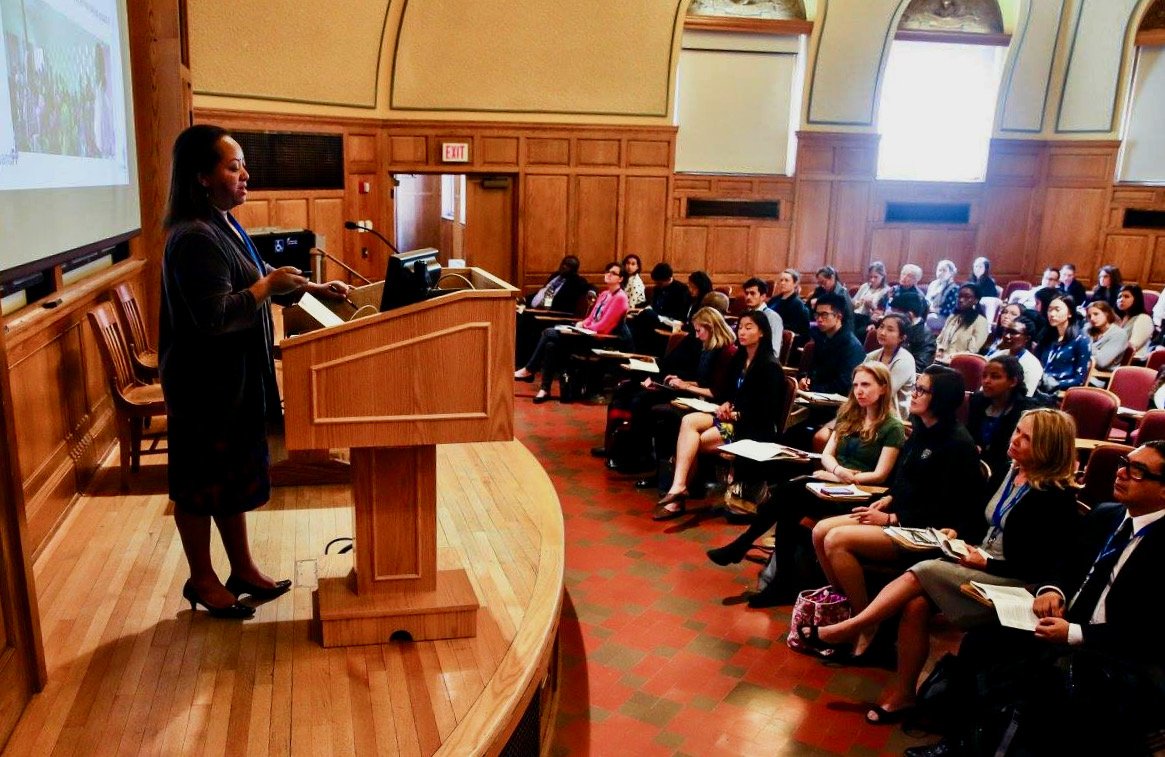
HEALTH EDUCATION STRATEGIES CERTIFICATE
Module 3: Visual Literacy
Visual literacy is defined as knowledge derived from visual aids, or pictures, whereas linguistic literacy refers to learning from the written or spoken word. John Debes originally coined the term “visual literacy” in 1969, and he described it as an ability to see, comprehend, discriminate and interpret objects and symbols in the environment, integrate them with other sensory experiences, and use them to creatively communicate with others or derive enjoyment. In the mid-1960s, Debes proposed that visuals are themselves a language.(1) Later, Ralph Wileman defined visual literacy as “the ability to ‘read,’ interpret, and understand information presented in pictorial or graphic images”. In 1972, Lida Cochran examined 72 different definitions of visual literacy and identified three themes in common: human abilities, teaching strategies and the promotion of ideas.
Visual literacy is based on visual language, and four types of visual language are described:
Body language
Object language (use of objects to convey information)
Sign and symbol language (pictorial representation of a message)
Abstract language (graphics or logos to represent ideas)
Using Visual Literacy Tools in Healthcare Delivery
Studies on visual literacy proliferated in the 1960s in response to the rise of television as a powerful medium of communication and an awareness of its ability to shape childhood development. The International Visual Literacy Association (IVLA) was founded to investigate the potential value of visual literacy principles and to apply them to enhance education and communication.(2) There has been a steady development in the field since that time, and visual aids have been integrated into classroom instruction, advertising, business, and patient education regarding medical procedures.
There have been many studies that have implemented the use of a patient education tools to enhance patient comprehension in low-literacy or illiterate populations. These culturally-sensitive educational tools have been used to assess improvements in rates of pneumococcal vaccination, adherence to antiretroviral treatment, and the improved consent process for cataract surgery(3). Informed consent and an understanding of the importance of adherence to post-operative medicine are critical components of medical procedures which can greatly benefit from new techniques and approaches. Visual communication tools can help to improve doctor-patient relationships by educating patients about the methods, risks, and benefits of medical procedures.
A study conducted by Moseley et al. examined the use of a poster and video presentation combined with verbal informed consent in a population lacking formal education. The study found that the visual materials significantly impacted patient understanding about cataract surgery. Clearly, visual communication tools can reach populations that may otherwise be unintentionally overlooked by medical practitioners due to their low levels of health literacy. Similarly, a study in India focused on improving patients' knowledge of the cataract surgery procedure, and the use of visual aids and verbal descriptions showed an increase in information retention pertaining to cataract surgery amongst patients.(4)
Within the United States, the problems associated with low health literacy are extensive among all ages, races, and socio-economic groups. Those segments of the population affected most by low health literacy are the elderly, recent immigrants, and the economically disadvantaged, all of whom are also at greater risk for chronic health conditions.(5) According to the National Adult Literacy Survey, approximately 20% of Americans read at a fifth-grade level or lower. On average, Americans read at only an eighth-grade level. Of course, a patient's ability to read is not the only component of health literacy, but it does contribute to their ability to understand health information and subsequently make informed decisions about their health. In a study of a low socio-economic status, low-literacy, predominantly African-American elderly population at particularly high risk for pneumococcal infection, the group that had viewed a simple visual communication aid was five times more likely to have received the pneumococcal vaccine than those who had not received the visual education tool.(6)
Footnotes
(1) Avgerinou, M. (2012). “What is Visual Literacy?” International Visual Literacy Association.
(2) Harminder, S.D., Dalia, G.S., and Otri, A.M. “Are we doing too many cataract operations? Cataract surgery: A global perspective.” British Journal of Ophthalmology. 93 (2009): 1-2.
(3) Karan, A. “The study examined the efficacy of multimedia in improving patient comprehension of cataract surgery procedure for informed consent.” April 2009. Unite for Sight Global Health and Innovation Conference 2009.
(4) Nienkamp, Meredith. Visual Learning Tools Overcome Health Illiteracy.
(5) Jenkins, L., & Baldi, S. (1992). The national adult literacy survey. Washington, DC: Department of Education.
(6) Jacobson, T. et al. “Use of a Low-Literacy Patient Education Tool to Enhance Pneumococcal Vaccination Rates: A Randomized Controlled Trail.” JAMA. (1999). 282(7): 646-650.
